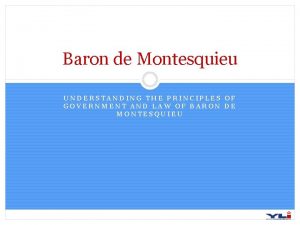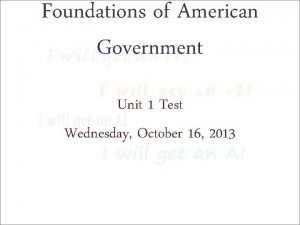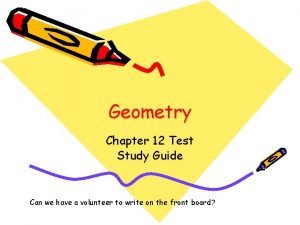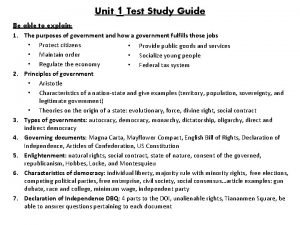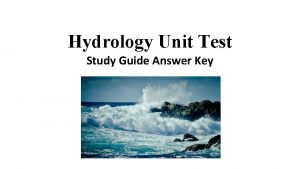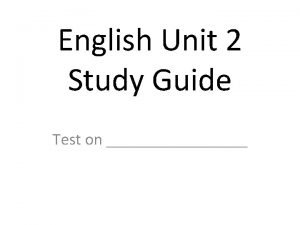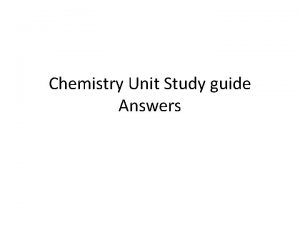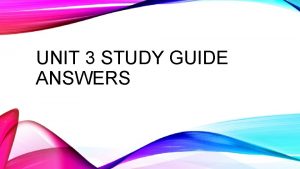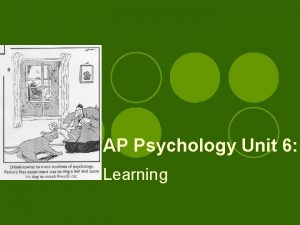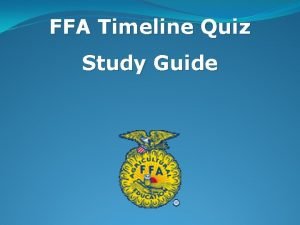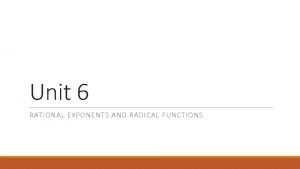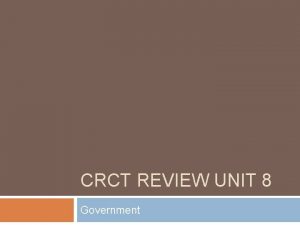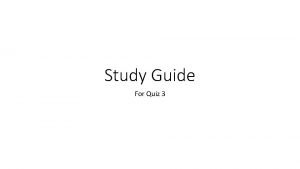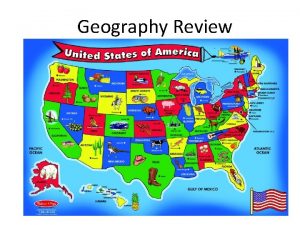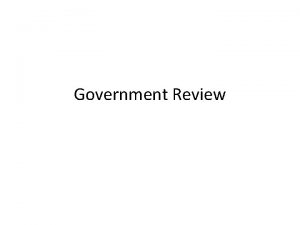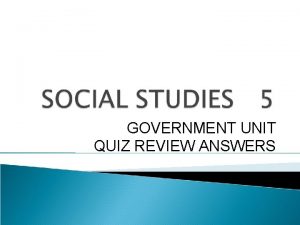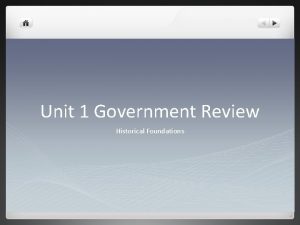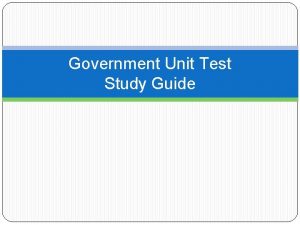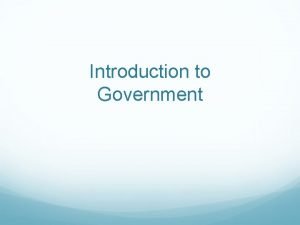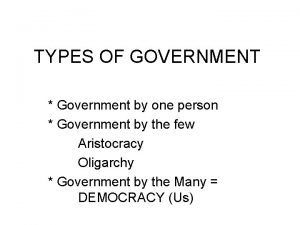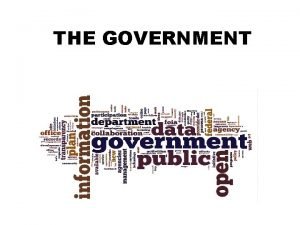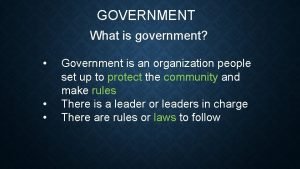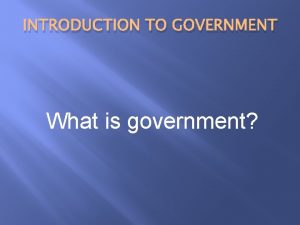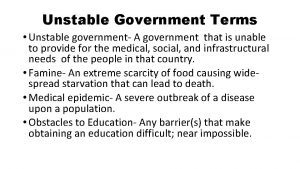Unit 1 Study Guide Review Study of Government






















- Slides: 22

Unit 1 Study Guide Review Study of Government

Government vs. Politics An institution A process Government

4 features of a state Population Territory Government Sovereignty

Purpose of the “state” under the Social Contract Theory The state exists to serve the will of the people

6 Purposes of Government in the Preamble Form a more perfect union Establish justice Provide for the common defense Promote the general welfare Insure domestic tranquility Secure the blessings of liberty

Majority Rule vs. Minority Rights The will of the majority cannot be used to deprive the rights to a member of a minority group.

Major content of the Declaration of Independence Complaints of the wrongs done to the colonists

Branches of government under the Articles of Confederation Only a legislative branch, consisting of a unicameral Congress

What resulted from the Philadelphia Convention Decided to draft a new constitution

Convention Plans New Jersey Plan: unicameral Congress with each state represented equally, a federal executive Virginia Plan: 3 branches, with a bicameral Congress Connecticut Plan: Congress would have 2 Houses; smaller Senate and a larger House

Smaller states favor Connecticut Compromise Made it possible for smaller states to support the creation of a strong central government

Federalists vs. Anti. Federalists: favored ratification of the Constitution Anti-Federalists: feared that the new government would have too much power and the people too little.

Power separation in the Constitution Legislative branch Judicial branch Executive branch

Checks and balances examples Congress: senate approves the President’s nominee for Supreme Court justice President: can veto an Act of Congress Courts: Supreme Court declares a law unconstitutional

st 1 three words of the Constitution and its principle “We the People” Popular sovereignty

Constitution has lasted 200+ years… Has built-in provisions or accommodating change

Ratification of the Bill of Rights and beyond Bill of Rights ratified in 1791 An amendment may only be changed by another amendment

Purpose of Federalism Divides power between a National Government and State Governments

Mc. Culloch v. Maryland Summary: Refusal of Mc. Culloch from paying taxes Ruling: Mc. Culloch won due to the Supremacy Clause

Full Faith and Credit Clause States must honor the legality of one another’s civil laws

19. Political Cartoon (8889) Who has power within a federal system of government? How is power divided within this system?

20. Essay Brainstorm Discuss the 6 purposes of government as outlined in the Preamble. (p. 8 -9) Explain or justify the Social Contract Theory of government. (8) Describe the system of checks and balances created by the Constitution. (67)
 Unit 1 government study guide
Unit 1 government study guide Unit 10, unit 10 review tests, unit 10 general test
Unit 10, unit 10 review tests, unit 10 general test Chapter 1 principles of government study guide answer key
Chapter 1 principles of government study guide answer key Foundations of american government unit 1 test review
Foundations of american government unit 1 test review Geometry chapter 12 test
Geometry chapter 12 test Unit 10 study guide answer key
Unit 10 study guide answer key Unit 1 test 2
Unit 1 test 2 Hydrology study guide answer key
Hydrology study guide answer key Temperate zone
Temperate zone English test unit 2
English test unit 2 Chemistry unit 3 study guide
Chemistry unit 3 study guide Unit 3 study guide math
Unit 3 study guide math Bill of attainder
Bill of attainder Africa geography unit test study guide
Africa geography unit test study guide Order of classical conditioning
Order of classical conditioning Unit 14 social psychology study guide answers
Unit 14 social psychology study guide answers Ffa unit study guide
Ffa unit study guide Unit 6 test radical functions
Unit 6 test radical functions Algebra 2 unit test
Algebra 2 unit test What are the three levels of government
What are the three levels of government Chapter review motion part a vocabulary review answer key
Chapter review motion part a vocabulary review answer key Ap gov final review
Ap gov final review Narrative review vs systematic review
Narrative review vs systematic review


